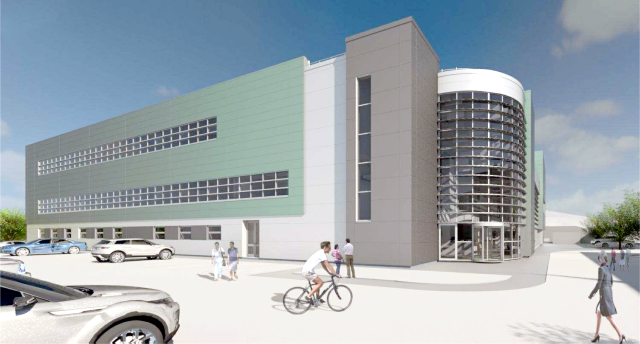Based
at the Science and Technology Facilities Council’s (STFC) Rutherford Appleton
Laboratory, EPAC will house a 10 Hertz petawatt laser configured for the
production and application of a wide range of radiation types, for example in
imaging, as well as fundamental research into laser matter interactions.
£81million has been awarded by the UK Government to support for the project.
Today was an exciting day for CLF, with our ground breaking ceremony hosted by
Science Minister Chris Skidmore and Physics Nobel Laureate Donna Strickland.
The 11th of February also marks UNESCO’s International Day of Women and Girls
in Science which aims to encourage women and girls to pursue a career and
subjects relating to science and technology.


[From left to right: MACE Terry Spraggett, Executive Chair of STFC Mark Thomson, Science Minister Chris Skidmore, Nobel Laureate Donna Strickland, Director of the CLF John Collier.]
“Today's launch of the £81m advanced imaging centre will enhance the UK's leading role in laser technology and will help to revolutionise medical imaging. I'm especially delighted to be launching the centre with Physics Nobel Prize winner Donna Strickland – only the third woman in history to achieve this award – on International Day of Women and Girls in Science." Science Minister, Chris Skidmore.
EPAC will enhance our capabilities to conduct world-leading science, reduce manufacturing costs and identify design improvements; tackling challenges across a variety of areas such as pharmaceuticals, aerospace, vehicle batteries, digital manufacture and medical prosthetics – boosting the UK's manufacturing sector.
Working at 10 hertz, this high-power short-pulse laser speeds up the development of new applications – for example, with existing technology, high resolution 3D imaging of diseased bones currently takes hours or days for results - however with the new laser system, we will be developing the potential for imaging within 40 seconds.
Laser-driven acceleration such as Wakefield Acceleration can also be applied, as well as driving high-energy protons, ions, neutrons and muons by adapting geometry.
Professor John Collier, Director of the UK's Central Laser Facility, said, “Laser driven radiation sources have the potential to be genuinely disruptive, impacting on existing markets and enabling new applications in new areas that previously would not have been possible. EPAC, through the work of the team of scientists and engineers at CLF and our colleagues in academia, will enable the UK to realise this potential by bringing together the wider science, community in a diverse programme of fundamental and applied research."
By 2024, universities, members of the scientific community and industry partners will be able to apply for access to EPAC to conduct their research relating to laser-driven applications and fundamental science studies.

(Impression of the new Extreme Photonics Applications Centre at STFC's Rutherford Appleton Laboratory in Oxfordshire. Credit: STFC)
The new national research centre will build on the work undertaken by 2018 Physics Nobel Prize Winner, and third woman in history to receive this accolade, Donna Strickland – alongside Arthur Ashkin and Gerard Mourou. Donna's work to develop high-intensity, ultrashort pulses of light beams transformed whole sectors, including medical technology and her techniques are now commonly used in laser surgery, among other disciplines.
Physics Nobel Prize Winner Donna Strickland said, "Science education helps develop skills in problem solving and critical thinking necessary to address some of the world's biggest challenges."
"When we encourage girls and women to engage with science, they bring more diversity to science and fresh perspectives that can only help in finding innovative solutions."
